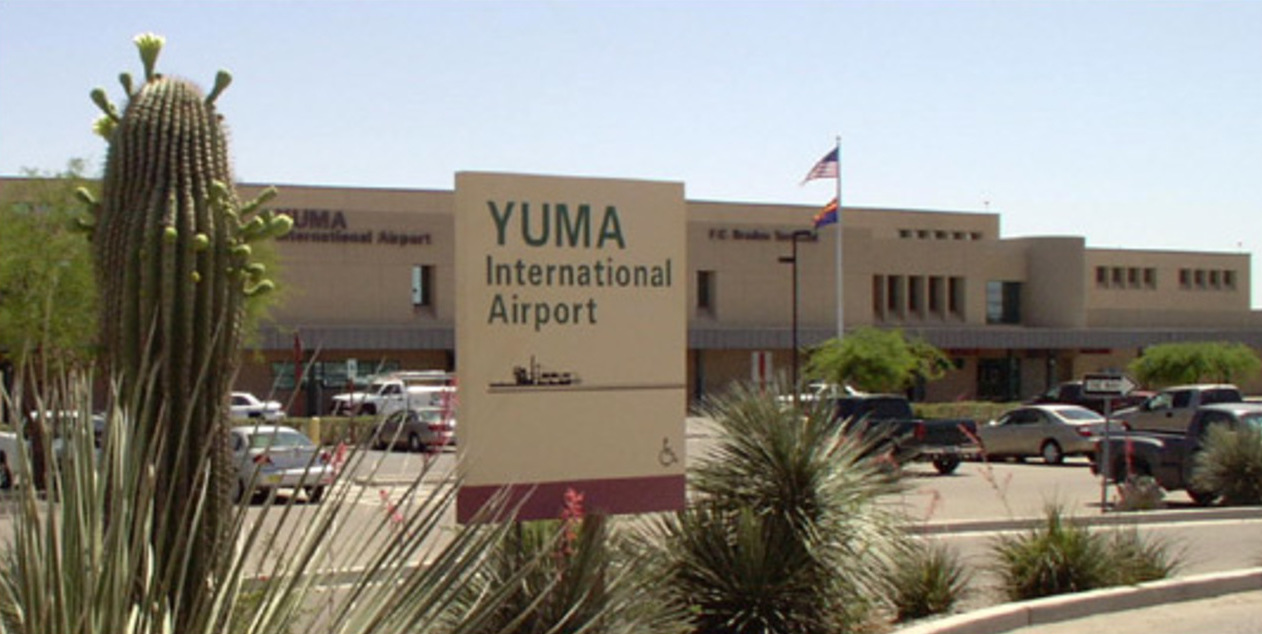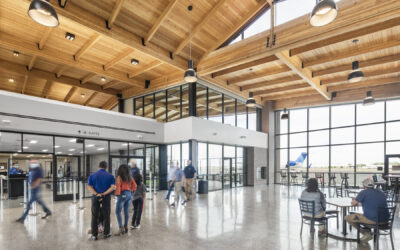Nestled along the Colorado River bordering California and Mexico, Yuma International Airport (YUM) serves a niche for leisure and military traffic in Arizona’s southwest. Since opening in 1912 as a US Army airfield, Yuma has played a pivotal role training generations of military pilots. Though smaller in scale, it fills a unique aviation purpose. This article traces Yuma’s little known history, details some surprising statistics while benchmarking against regional counterparts. There’s more to discover about this desert airport than you may expect!
A Look at Yuma’s Aviation Origins
The Army Air Corps started using Yuma’s superb flying conditions for pilot training flights back in 1912. First known as the Yuma Aero Post, the WWII-era military investments expanded runways and infrastructure into the Yuma Army Airfield serving as key Southwestern training hub, taking on a life separate from civilian airports of the era.
Commercial usage began gradually. Western Airlines DC-3 service kicked off passenger travel in the 1950s with the City taking over management by 1959. As military transferred parts of the Army airfield to the City through 1970s, civilian transit ramped up with the first control tower going online in 1969. Renamed Yuma International Airport and with over $16 million in facility upgrades by late 1990s, the airport continues joint civilian-military operations to this day.
Fun Facts and Figures
Before comparing to peer airports, here’s a snapshot of current YUM statistics:
– 2 active runways: primary 11,000 ft, secondary 7,500 ft
– Handles 250+ aircraft daily on average
– Approximately 90k passenger traffic in 2021
– Single commercial carrier: Avelo Airlines
– Primarily serves private propeller planes and corporate jets
– Biggest aircraft: Boeing 737s
– 24 hours customs service as official port of entry
Benchmarking Against Regional and State Airports
While no Phoenix or Las Vegas, as the sole Arizona airport bordering California and Mexico, how does YUM contrast statistically to peer airports within the state?
By total passengers (2021 stats):
– 4th statewide
– 10x smaller than Phoenix Sky Harbor
For aircraft operations/ flights (2019 data):
– Also 4th across Arizona airports
– But beats Tucson by over 3k flights
So while dwarfed by Phoenix’s mega operations driving half the state’s traffic, Yuma proved spry handling over a quarter million travelers yearly. The nearly 70 daily military aircraft training flights certainly assist the activity levels. Not bad for compact facilities in a remote Sonoran desert town of just 100k!
Yuma’s Continuing Ascent
With plans for expanded Customs and FBO services plus more maintenance hangars coming, Yuma International seems poised for growth serving southern Arizona’s sunny skies for another century helping move commerce, tourists, and trainee pilots alike! Just don’t blink flying past or you might miss this unlikely aviation gem.
So next time you embark via Phoenix connecting afar, know capable capacity supports America’s wings steadily from myriad secondary airports like Yuma helping stitch our nation’s vibrant patchwork.







0 Comments